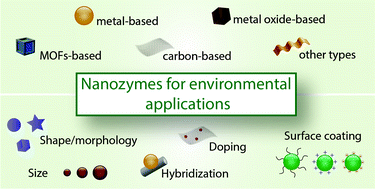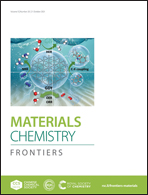Recent trends in nanozymes design: from materials and structures to environmental applications
Abstract
Recently, a large variety of engineered nanostructures possessing enzyme-like activities have been proposed, whose unique physical–chemical characteristics have enabled remarkable technological advances. In this review, we survey the recent advances in nanozymes for environmental applications. First, we give an updated overview of different types of nanomaterial-based artificial enzymes, including carbon, metal and metal oxide nanomaterials, metal–organic frameworks (MOFs) and hybrid nanostructures, and compare their properties (namely, the Michaelis–Menten constant (Km) and the maximal reaction velocity (Vmax)) with standard natural enzymes. Furthermore, the progress in nanozymes for detecting and removing various environmental contaminants (e.g., heavy metals, dyes, pesticides, and hormones) is also discussed. Then, we provide a comprehensive overview of the enlightening strategies employed (based on the modification of size, shape/morphology, surface coating, doping and use of hybrid structures, for instance) to modulate the properties of nanozymes in order to achieve the desired properties for environmental sensing and remediation. Finally, challenges and current opportunities are discussed to stimulate the interest of researchers in the development of novel multifunctional nanozymes for environmental applications.

- This article is part of the themed collection: 2021 Materials Chemistry Frontiers Review-type Articles


 Please wait while we load your content...
Please wait while we load your content...